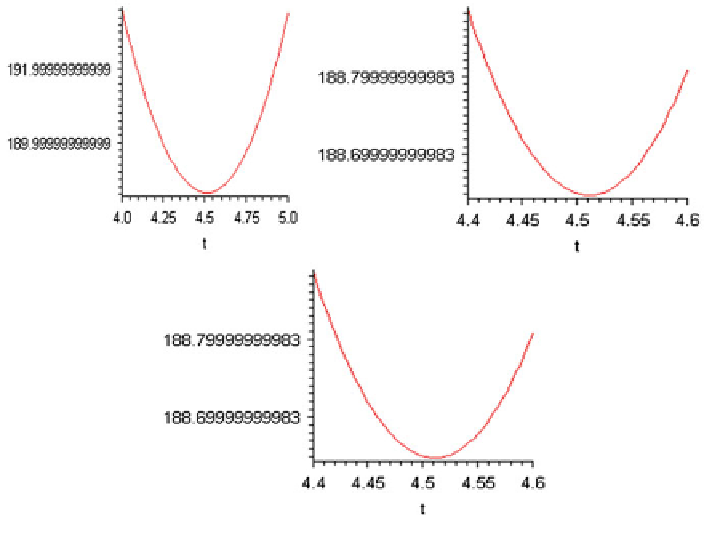Environmental Engineering Reference
In-Depth Information
Fig. 8.2 Iterative adjustment reveals that the precise solution is 4.5 time periods
8.4 Case Studies from British Columbia
8.4.1 Introduction
This section utilizes data provided by municipalities in BC to estimate the
parameters of the DSS model for purposes of determining the optimal renewal of
water assets. The data supplied by the municipalities encompass a number of cities
where the municipality is the wholesale supplier of water. Three of these cities are
large enough that adequate sample sizes exist for the purposes of regression anal-
ysis. In order to preserve their privacy, these cities will be called cities A, B, and C.
The data provide a record of failures over the period 1986
2005. This record
indicates the date, cost, pipe size, pipe type, soil type, and depth of pipe. Since there
are only two pipe types and two soil types, dummy variables will be used for these.
Both slope (in conjunction with age) and intercept dummies were created. Addi-
tionally, the primary variable of concern is the age of the system, which was not
included in the dataset. To determine the age, a survey of the housing market was
conducted in each area. A more thorough explanation of the data manipulation can
be found in the appendix along with all the regression results.
This application of the DSS determines the optimal renewal period for the whole
network in each city. The parameters for the functions S(x) and F(x) are estimated
-

Search WWH ::

Custom Search